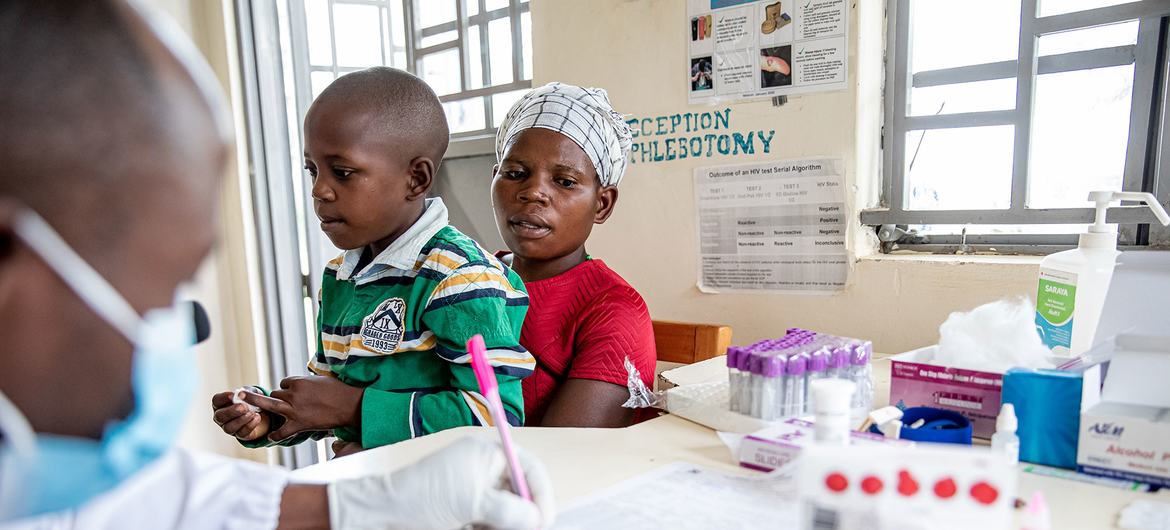Despite the effectiveness of HIV treatments and tools to prevent, detect and treat opportunistic infections, the AIDS pandemic claimed an average of one life per minute last year with 650,000 deaths, a new report highlighted this Wednesday. from UNAIDS .
The study, which was presented on the eve of the International AIDS Conference to be held in the Canadian city of Montreal, reveals that the emergence of COVID-19 and other global crises have weakened progress against HIV, and reduced resources in the fight against the disease.
Although global figures seem to indicate a drop in records of new cases of the disease, the number of new infections worldwide fell only 3.6% between 2020 and 2021, the smallest annual decrease in new HIV infections since 2016.
Added to this record is another important fact: for several years, Eastern Europe and Central Asia, the Middle East and North Africa and Latin America have continued to experience annual growth in HIV infections.
Thus, in Asia and the Pacific, new HIV infections are increasing where they previously decreased, and in eastern and southern Africa, the rapid progress of previous years slowed considerably in 2021.
On the positive side, West and Central Africa and the Caribbean have seen notable declines in new HIV infections, but in these regions the response to the disease is threatened by growing resource shortages.
"These data show that the global AIDS response is in grave danger. If we do not move quickly we will be losing ground, as the pandemic grows between COVID-19, mass displacement and other crises. Let us remember the millions of preventable deaths we are trying to stop stop," said UNAIDS Executive Director Winnie Byanyima at the launch of the report.
The countries with the largest increase in new HIV infections since 2015 were: the Philippines, Madagascar, Congo and South Sudan. On the other hand, South Africa, Nigeria, India and the United Republic of Tanzania had some of the most significant reductions in the number of HIV infections.
The lack of progress led to nearly 1.5 million new infections being recorded last year, a figure that exceeds global targets against the disease by more than one million.
Sharp inequalities within and between countries hamper progress in the HIV response, and the virus itself is further widening those inequalities.

UNICEF/Karin Schermbrucke A mother and her nine-year-old son, both HIV-positive, at a clinic in Mubende, Uganda.
Women and girls lead the number of new infections
Women and adolescents were the population group most affected by new infections during 2021, with a new infection every two minutes.
The gendered rise of HIV, particularly for young African women and girls, coincided with the disruption of HIV treatment and prevention services, with millions of girls left out of school due to pandemics, and the increase in teenage pregnancies, along with gender violence.
Adolescent girls and young women are three times more likely to acquire HIV in sub-Saharan Africa than adolescent girls and young men.
In relation to other population groups, between 2019 and 2021 the prevalence of HIV among men who have sex with men almost doubled in El Salvador and multiplied by eight among transgender people.

UNICEF/Giacomo Pirozzi. A nine-year-old girl, living with HIV, drawing in a day center supported by UNICEF. The institution offers psychosocial care in Tashkent, Uzbekistan.
Current figures are far from the objectives for 2025
The report also shows that access to antiretroviral treatment for all people living with HIV is failing, as it grew more slowly in 2021 than in an entire decade.
Although three quarters of all people living with HIV have access to antiretroviral treatment, ten million people still do not, and only half (52%) of children living with the disease have access to medicines that they can save their lives; The gap in HIV treatment coverage between children and adults is widening rather than narrowing .
The study highlights the devastating consequences that can happen if urgent measures are not taken to address these inequalities. If the current pace continues, the number of new annual infections will exceed 1.2 million in 2025, the year in which United Nations Member States set a target of fewer than 370,000 new infections.
Furthermore, at a time when international solidarity is more necessary than ever, many high-income countries are cutting their aid. International resources available for HIV last year were 6% lower than in 2010.
Development aid for HIV from bilateral donors, other than the United States of America, has plummeted by 57% in the last decade. The HIV response in low- and middle-income countries is $8 billion short of the amount needed by 2025.
"It is still possible for leaders to refocus the response to end AIDS by 2030," Byanyima said.
The head of UNAIDS reasoned that ending the disease “will cost much less money than not ending AIDS. More importantly, the actions needed to end AIDS will also better prepare the world to protect itself from the threats of future pandemics."
A new home test to detect HIV that will cost a dollar
Seeking to further facilitate access to diagnostic tests, the World Health Organization (WHO) prequalified an at-home test that will cost just one dollar thanks to a new partnership between the Clinton Health Access Initiative and MedAccess companies. and Biotech.
That test will be made available to the public sector in low- and middle-income countries.
According to the WHO, many people among high-risk populations for HIV consider self-testing to be a convenient and confidential HIV screening option.
WHO recommends HIV self-testing as a safe, accurate and effective way to reach people who would not otherwise be tested and to date has prequalified six home tests in both oral fluids and herbal products. blood, ensuring quality and ease of use.
















